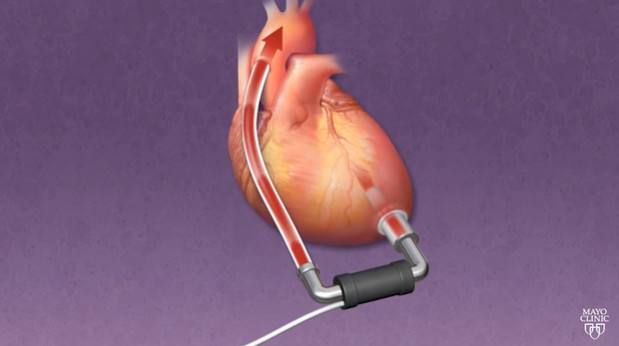
A ventricular assist device, also known as a VAD, is an implantable mechanical pump that helps pump blood from the lower chambers of your heart, or ventricles, to the rest of your body. Although this device can be placed in the left, right or both ventricles of your heart, it is most frequently used in the left ventricle. When placed in the left ventricle it is called a left ventricular assist device, or LVAD.
A ventricular assist device is used in people who have weakened hearts or heart failure. A VAD may be implanted while the patient waits for a heart transplant or is working to get his or her heart strong enough to effectively pump blood on its own.
"Patients with end-stage heart failure may be out of breath brushing their teeth or sitting in the recliner watching TV," says Dr. John Stulak, a Mayo Clinic cardiovascular surgeon. "When a patient ends up having symptoms at rest, that's the telltale sign that this is end-stage heart failure. What the LVAD does is help the left side of the heart pump and decongest the heart and get all the blood moving forward again. The VAD helps patients get back to basically doing everything they want to do."
On the Mayo Clinic Q&A podcast, Dr. Stulak discusses technological advances in ventricular assist devices and how the therapy is underused.
Watch: Dr. John Stulak explain how ventricular assist devices work.
Read the full transcript.
____________________________________________
For the safety of its patients, staff and visitors, Mayo Clinic has strict masking policies in place. Anyone shown without a mask was either recorded prior to COVID-19 or recorded in a nonpatient care area where social distancing and other safety protocols were followed.







